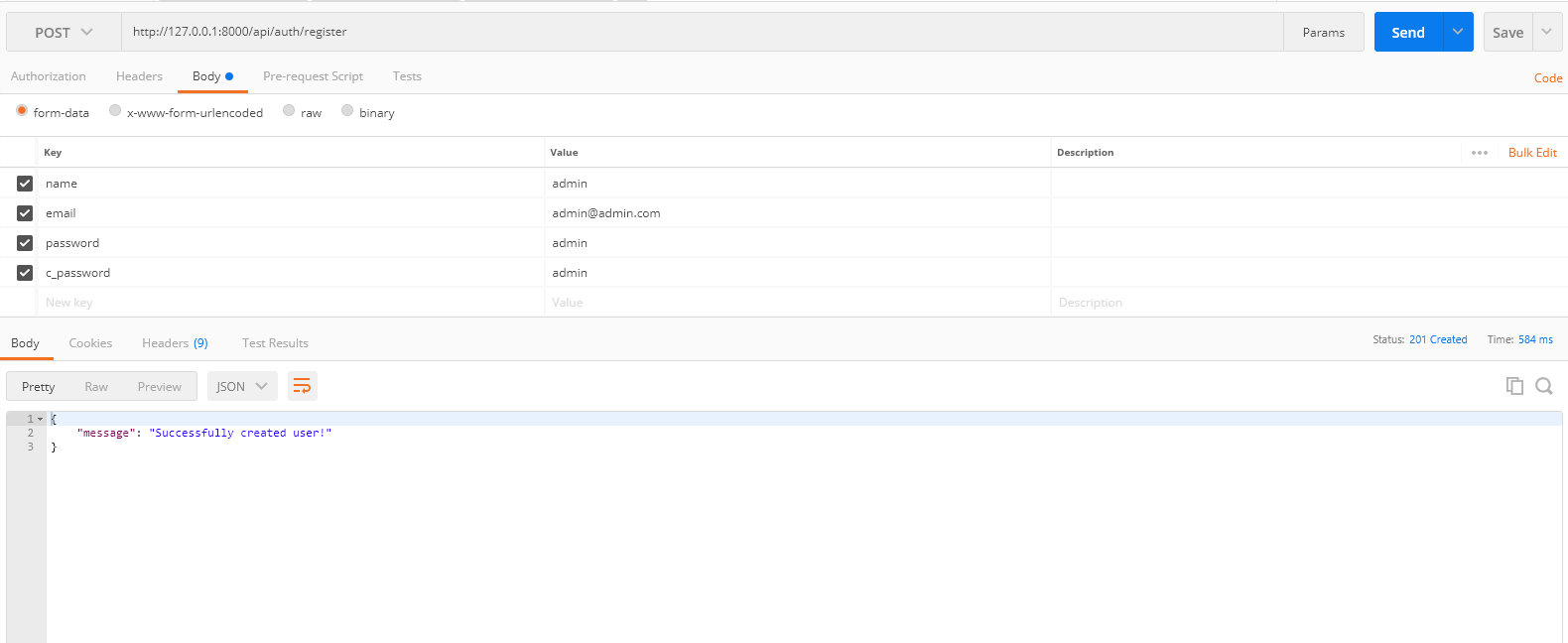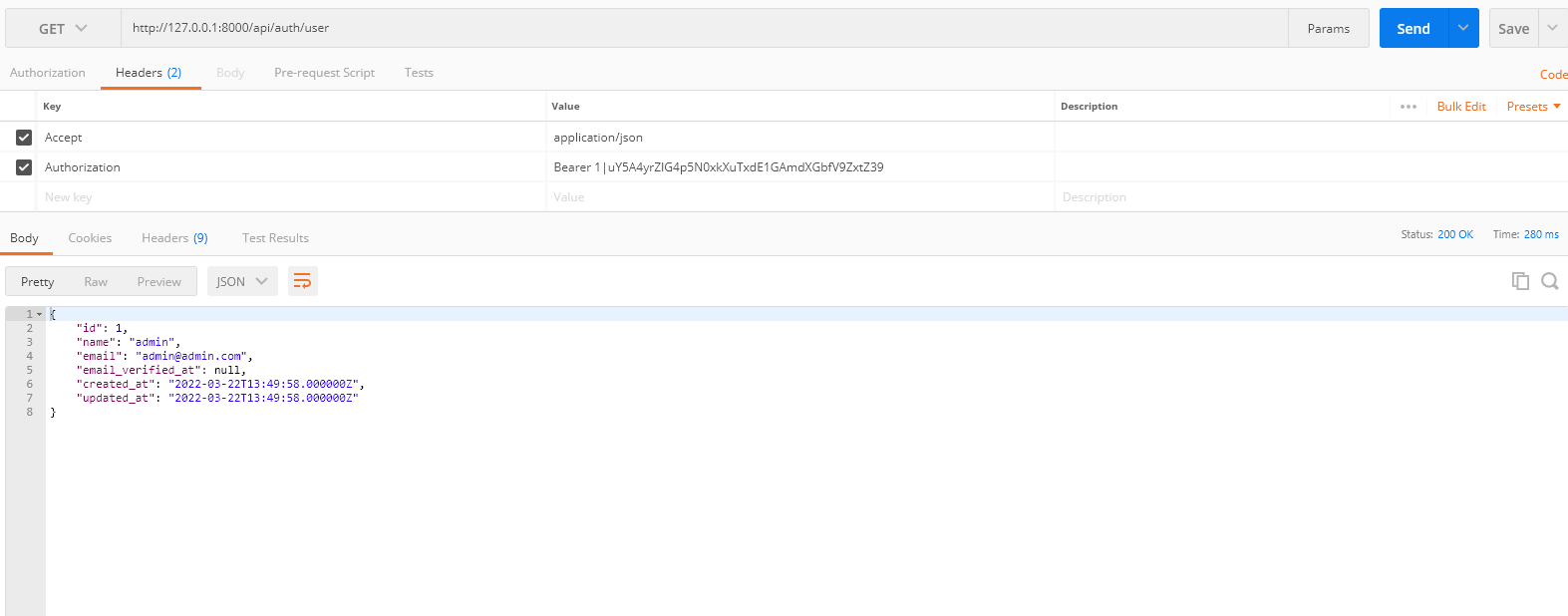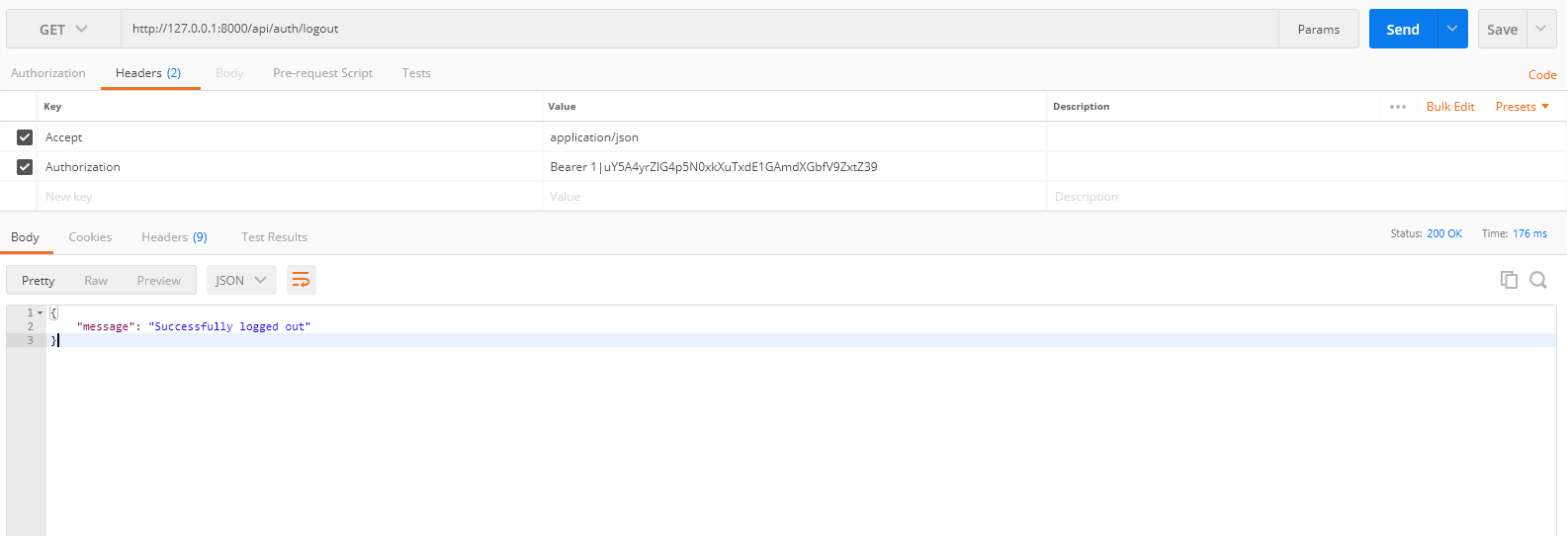Laravel API Authentication Using Sanctum
Laravel Sanctum provides a featherweight authentication system for SPAs (single page applications), mobile applications, and simple, token based APIs.
Introduction
Laravel Sanctum provides a featherweight authentication system for SPAs (single page applications), mobile applications, and simple, token based APIs. Sanctum allows each user of your application to generate multiple API tokens for their account. These tokens may be granted abilities / scopes which specify which actions the tokens are allowed to perform.
Installation
composer.json file does not include laravel/sanctum, you may follow the installation instructions below. 🙏
- You may install Laravel Sanctum via the Composer package manager:
-
Next, you should publish the Sanctum configuration and migration files using the
vendor:publishArtisan command. Thesanctumconfiguration file will be placed in your application'sconfigdirectory: - Sanctum allows you to issue
API tokens / personal access tokensthat may be used to authenticate API requests to your application. When making requests using API tokens, the token should be included in the Authorization header as a Bearer token. - Finally, you should run your database migrations. Sanctum will create one database table in which to store API tokens:
- Next, if you plan to utilize Sanctum to authenticate an SPA, you should add Sanctum's middleware to your
apimiddleware group within your application'sapp/Http/Kernel.phpfile:
composer require laravel/sanctumphp artisan vendor:publish --provider="Laravel\Sanctum\SanctumServiceProvider"To begin issuing tokens for users, your User model should use the Laravel\Sanctum\HasApiTokens trait:
use Laravel\Sanctum\HasApiTokens;
class User extends Authenticatable
{
use HasApiTokens;
}php artisan migrate'api' => [
\Laravel\Sanctum\Http\Middleware\EnsureFrontendRequestsAreStateful::class,
'throttle:api',
\Illuminate\Routing\Middleware\SubstituteBindings::class,
],Sanctum Authentication
We'll create simple user authentication methods via Laravel Sanctum below.
- Create Route: Create routes into
routes/api.phpthat point toAuthController: - Create Controller: Now, we have to create a controller that handles all API requests. Follow below artisan command to create a new controller:
- Register User: We'll implement a simple method to register a user:
- Login User: In the same file
AuthController.php, create a simple login method that generatesAPI tokenvia sanctum: - Get User: In the same file AuthController.php, create a simple method to get the user's details:
- Logout User: In the same file
AuthController.php, create a simple method torevokethe token from the user:
<?php
use Illuminate\Http\Request;
use Illuminate\Support\Facades\Route;
use App\Http\Controllers\AuthController;
/*
|--------------------------------------------------------------------------
| API Routes
|--------------------------------------------------------------------------
|
| Here is where you can register API routes for your application. These
| routes are loaded by the RouteServiceProvider within a group which
| is assigned the "api" middleware group. Enjoy building your API!
|
*/
Route::group([
'prefix' => 'auth'
], function () {
Route::post('login', [AuthController::class, 'login']);
Route::post('register', [AuthController::class, 'register']);
Route::group([
'middleware' => 'auth:sanctum'
], function () {
Route::get('logout', [AuthController::class, 'logout']);
Route::get('user', [AuthController::class, 'user']);
});
});php artisan make:controller AuthController<?php
namespace App\Http\Controllers;
use Illuminate\Http\Request;
use Illuminate\Support\Facades\Auth;
use Carbon\Carbon;
use App\Models\User;
use Validator;
class AuthController extends Controller
{
/**
* Create user
*
* @param [string] name
* @param [string] email
* @param [string] password
* @param [string] password_confirmation
* @return [string] message
*/
public function register(Request $request)
{
$request->validate([
'name' => 'required|string',
'email' => 'required|string|email|unique:users',
'password' => 'required|string|',
'c_password'=>'required|same:password',
]);
$user = new User([
'name' => $request->name,
'email' => $request->email,
'password' => bcrypt($request->password)
]);
if($user->save()){
return response()->json([
'message' => 'Successfully created user!'
], 201);
}else{
return response()->json(['error'=>'Provide proper details']);
}
}
}TEST register user API using postman

/**
* Login user and create token
*
* @param [string] email
* @param [string] password
* @param [boolean] remember_me
* @return [string] access_token
* @return [string] token_type
* @return [string] expires_at
*/
public function login(Request $request)
{
$request->validate([
'email' => 'required|string|email',
'password' => 'required|string',
'remember_me' => 'boolean'
]);
$credentials = request(['email', 'password']);
if(!Auth::attempt($credentials))
{
return response()->json([
'message' => 'Unauthorized'
], 401);
}
$user = $request->user();
$tokenResult = $user->createToken('Personal Access Token');
$token = $tokenResult->plainTextToken;
return response()->json([
'access_token' => $token,
'token_type' => 'Bearer',
]);
}TEST Login user API using postman

/**
* Get the authenticated User
*
* @return [json] user object
*/
public function user(Request $request)
{
$user = Auth::user();
return response()->json($user);
}TEST get user API using postman

/**
* Logout user (Revoke the token)
*
* @return [string] message
*/
public function logout(Request $request)
{
$request->user()->tokens()->delete();
return response()->json([
'message' => 'Successfully logged out'
]);
}TEST logout user API using postman
